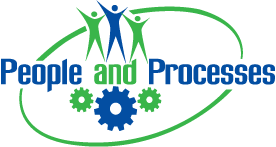 The Maintenance Planner is charged with the creation and maintenance of the job plan to help drive the efficiency of the craftspeople. Since the ideal Maintenance Planner is one of your best craftspeople, they should be quite knowledgeable with regards to the steps required to complete a maintenance job. However, there is an old saying that “the shortest pencil is better than the longest memory” for good reason, especially if you listen to how my wife reflects on how short my memory really is. I think it’s more of a case of selective hearing but I’m not going to tell her that.
The Maintenance Planner is charged with the creation and maintenance of the job plan to help drive the efficiency of the craftspeople. Since the ideal Maintenance Planner is one of your best craftspeople, they should be quite knowledgeable with regards to the steps required to complete a maintenance job. However, there is an old saying that “the shortest pencil is better than the longest memory” for good reason, especially if you listen to how my wife reflects on how short my memory really is. I think it’s more of a case of selective hearing but I’m not going to tell her that.Anyway… I was recently working with a group of Maintenance Planners and they shared some maintenance tasks lists with me. When I reviewed the procedures, I thought there might be some gaps in the tasks and their sequence. I like to adhere to the “show me” approach so I suggested that we actually walk down one of the jobs. When we started the walk down, the Planner showed vast knowledge on the job. The only problem was about 75% of the activities weren’t on the job plan. He would mention a task and I would comment back “Oops, that’s not on the plan”. He would go to another task and ask "Is that on the plan?". My reply often was "Nope".
When we got back to their desks, the Planners told me how eye-opening that exercise was. It turns out that a number of the Job Plans had been done from the desk using their memory. It’s much better to walk the job and jot down the steps so that you don’t miss things from memory.
Get more information on how to improve your maintenance planning and scheduling processes or learn how we guide you to success in the process here. There you will find our training courses, planner coaching, assessment, and more resources.
When you walk the job, you should consider the following items in addition to the normal job plan items:- Routing of the task steps, especially if they are located on multiple levels or require the closing/ opening of valves in a sequential pattern as examples.
- Special tools required, even items like a rope and bucket to pull up tools to the top of the structure if using a ladders
- Task sequence
- OEM cut sheets and other information required to properly set up or calibrate items.
What other items should you add?
Cheers, Jeff Shiver
